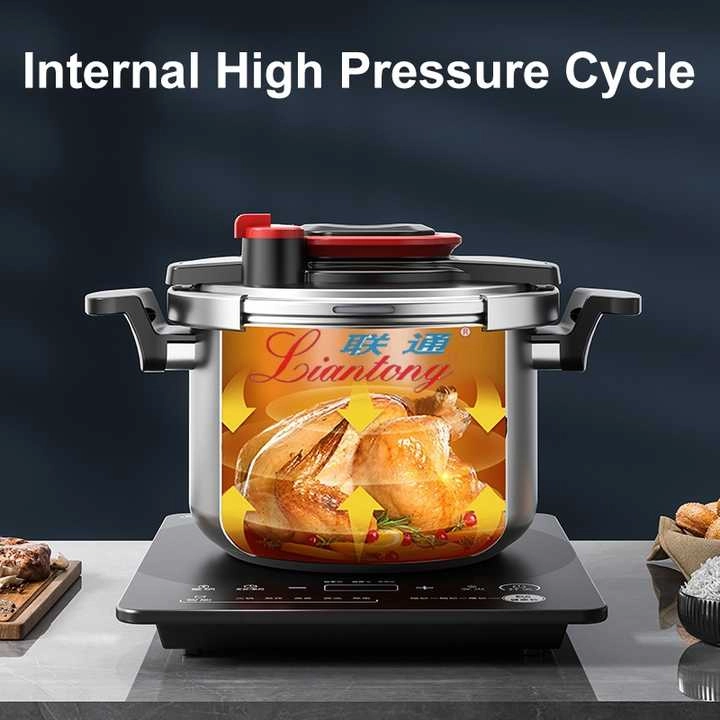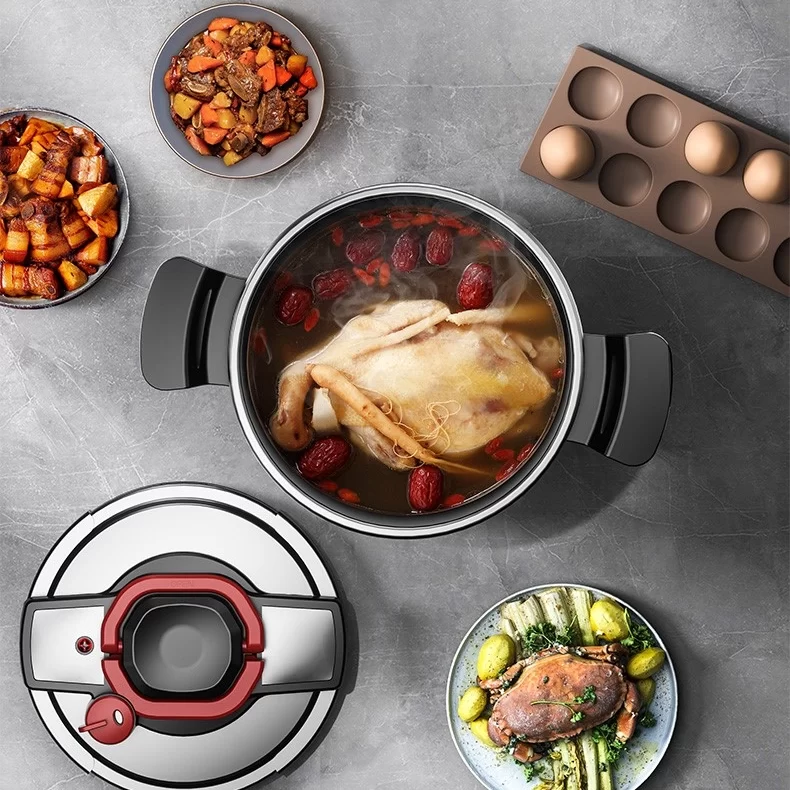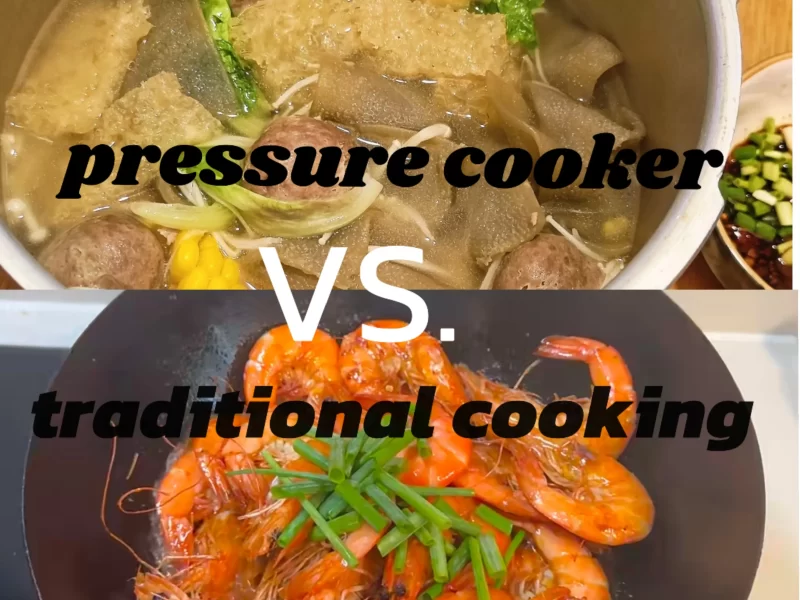
In the world of cuisine, there are various cooking methods, and pressure cookers and traditional cooking are like two shining stars, each emitting a unique light. Understanding their advantages and disadvantages can help us make wise choices in the kitchen based on different needs.
The advantages of pressure cooker cooking
Fast speed
The pressure cooker increases the internal pressure by closing the space inside the pot. As the pressure increases, the boiling point of water also rises, usually reaching around 110-120℃ (under normal atmospheric pressure, the boiling point of water is 100℃). This high-temperature environment greatly shortens the cooking time.
For example, for stewed beef, the traditional cooking method may take 1.5-2 hours to stew the beef until it is tender. Using a pressure cooker, it only takes 30-40 minutes to achieve a similar effect. This is conducive to busy modern people to improve cooking efficiency and save a lot of time.
Maintain nutrition
Due to the short cooking time of the pressure cooker, the ingredients can quickly mature under high-temperature pressure cookers and pressure environments, reducing the loss of nutrients because of long-term heating, and better preserving some nutrients of the ingredients such as vitamins and minerals.
Take cooking vegetables as an example. In the long boiling process of traditional cooking methods, water-soluble vitamins (such as vitamin C) in vegetables may be lost in large quantities. However, using a pressure cooker, vegetables can be cooked thoroughly in a short time, and the retention rate of nutrients such as vitamin C is relatively high. Studies have shown that cooking vegetables with a pressure cooker can increase the retention rate of vitamin C by 20% to 30% compared to traditional cooking methods.
Energy-saving and efficient
Whether using gas or electricity as energy, compared to traditional cooking that requires a longer heating process, a pressure cooker can complete cooking in a shorter time, thereby reducing energy consumption.
If you use a traditional stove to cook soup, you need to simmer it on low heat for 2 hours, while using an electric pressure cooker only takes about 1 hour. Taking electricity consumption as an example, assuming that the power of the stove is 1500 watts and the power of the electric pressure cooker is 1000 watts, the power consumption of the stove to cook soup is about 3 kWh (1.5 kWh x 2 hours), while the power consumption of the electric pressure cooker is about 1 kWh (1 kWh x 1 hour), and the energy-saving effect is obvious.
The disadvantages of pressure cooker cooking
The taste may be slightly inferior
Due to the pressure cooker’s fast cooking speed, the ingredients can reach a soft and tender state in a short time. For some dishes that need to be gradually seasoned during the cooking process, the taste may not be mellow enough. In the process of fast cooking, the time for the ingredients and seasonings to penetrate and blend with each other is relatively short.
There are certain risks in operation
The pressure cooker works under high pressure. Improper operation, such as excessive food in the pot, blocked exhaust vents, or malfunctioning pressure control devices, may lead to dangerous situations such as the explosion of the pressure cooker.
The advantages of traditional cooking
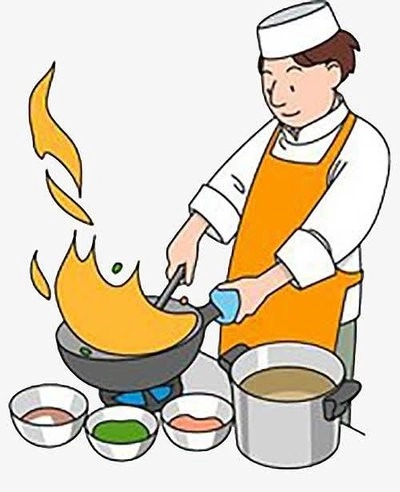
Rich taste
Traditional cooking methods such as frying, stir-frying, stewing, and roasting have a relatively long cooking process. Chefs can flexibly adjust the heat and cooking time based on experience so that the ingredients can fully absorb the seasonings at different temperatures and cooking stages, and have a rich taste.
For example, traditional Chinese stir-frying requires steps such as a hot pan, cold oil, and high-heat stir-frying. Try to keep the crisp and tender taste of vegetables, and at the same time, evenly wrap the seasonings on the surface of the ingredients, with color, aroma and taste.
Intuitive cooking process
In traditional cooking, chefs can directly observe the changes in ingredients during the cooking process, such as color and texture. Adjusting the cooking temperature, time, and amount of seasonings in time according to these changes can better control the cooking results. When frying fish, chefs can judge whether the fish has been fried to a golden brown by observing the surface color of the fish, and thus decide when to turn it over.
The disadvantages of traditional cooking
High time cost
Many traditional cooking methods take a long time to complete, especially some stewed, boiled, and roasted dishes. For example, roasting a whole chicken may take 1-2 hours, and stewing chicken soup may take 3-4 hours. This is a great inconvenience for people who are pressed for time.
Nutrient loss
During the long cooking process, especially through boiling, high-temperature roasting and other methods, some nutrients in the ingredients are easily destroyed or lost. For example, high-temperature roasting can cause protein denaturation in meat, and long-term boiling can cause vitamins and other nutrients in vegetables to dissolve in water and cause losses.
Pressure Cookers Vs. Traditional Cooking
| Time cost | Nutrient retention | Energy consumption | Taste | Safety | |
| Pressure cooker | Fast speed, time-saving | Maintain good nutrition | Energy-saving | General | Exist risk |
| Traditional cooking | High time cost | Nutrient loss | More energy-consuming | rich | Less risky |
Cooking tool selection strategy
When time is tight
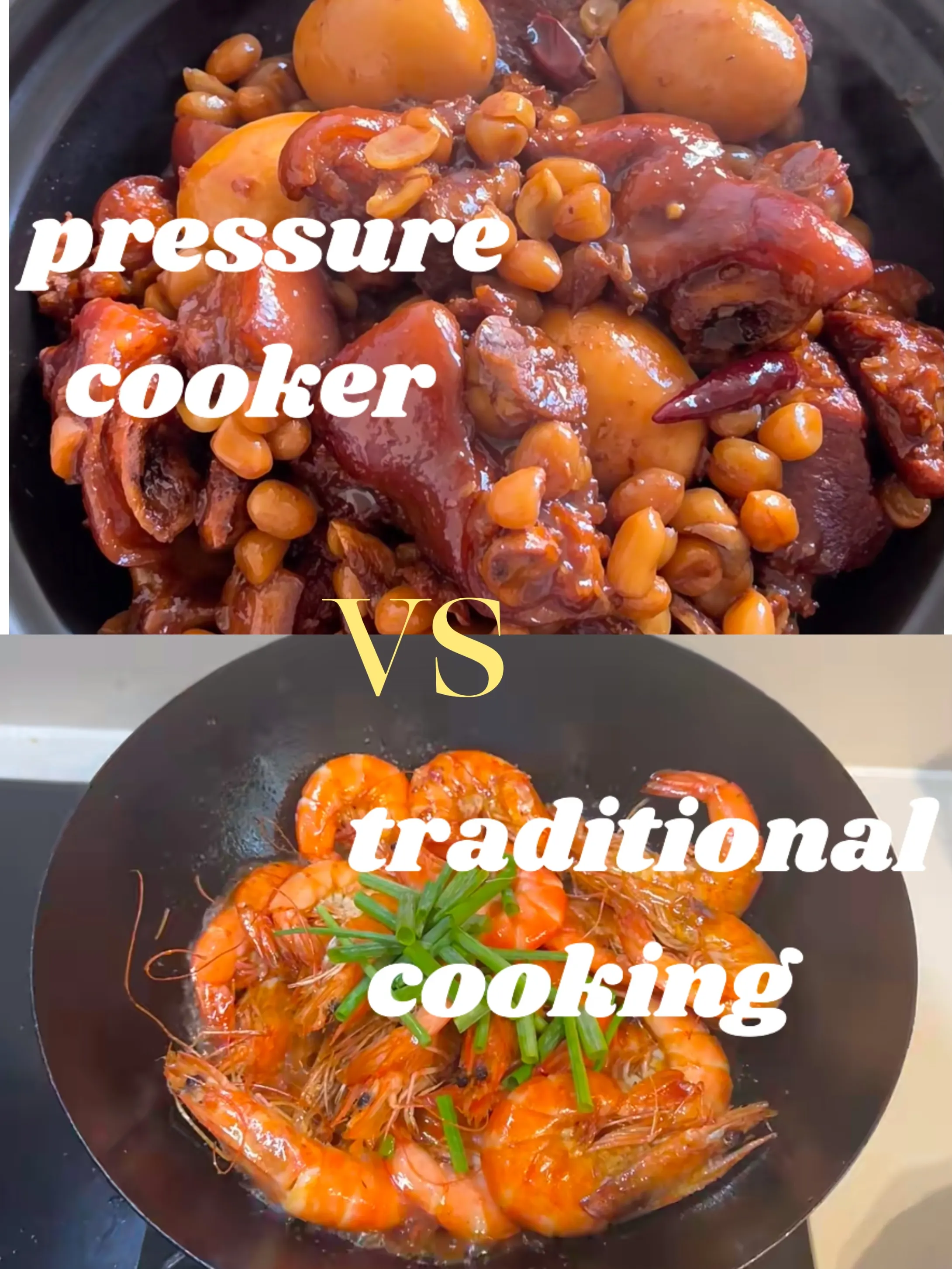
Pressure cookers are preferred, which can quickly cook rice, stew meat, and cook beans. For example, if you use traditional methods, it may take 1-1.5 hours to cook a pot of red bean and barley porridge, but it can be cooked in 30-40 minutes with a pressure cooker, which can quickly meet dining needs.
When pursuing taste and cooking experience
If you have enough time to enjoy the cooking process, traditional cooking methods are more suitable. For example, when making traditional sweet and sour spareribs, fry them first and then stew them, so that the spareribs can be slowly flavored. While enjoying the cooking process, you can make delicious dishes with good color, aroma, and taste.
When cooking easy-to-cook ingredients or making simple dishes
Traditional frying pans or soup pots are very convenient. These dishes have a short cooking time and can be quickly completed using traditional methods. Stir-frying and other operations can better mix with the ingredients to achieve the desired taste.
Pay attention to nutrient retention
When cooking ingredients that are easy to lose nutrients, such as fresh vegetables, seafood, etc. Pressure cookers are a good choice to reduce nutrient loss for vegetables. For seafood, steaming is a traditional cooking method that ensures taste while retaining its nutrients to the greatest extent, such as steamed fish, which is simple and nutritious.
Conclusion
In short, pressure cookers and traditional cooking both have their own advantages and disadvantages. We should master their skills and use cooking tools proficiently to make every meal delicious and in line with the rhythm of life. As a leading pressure cooker supplier, Linkton is dedicated to providing you with high-quality, energy-saving and time-saving pressure cookers. If you need them, please contact us.

